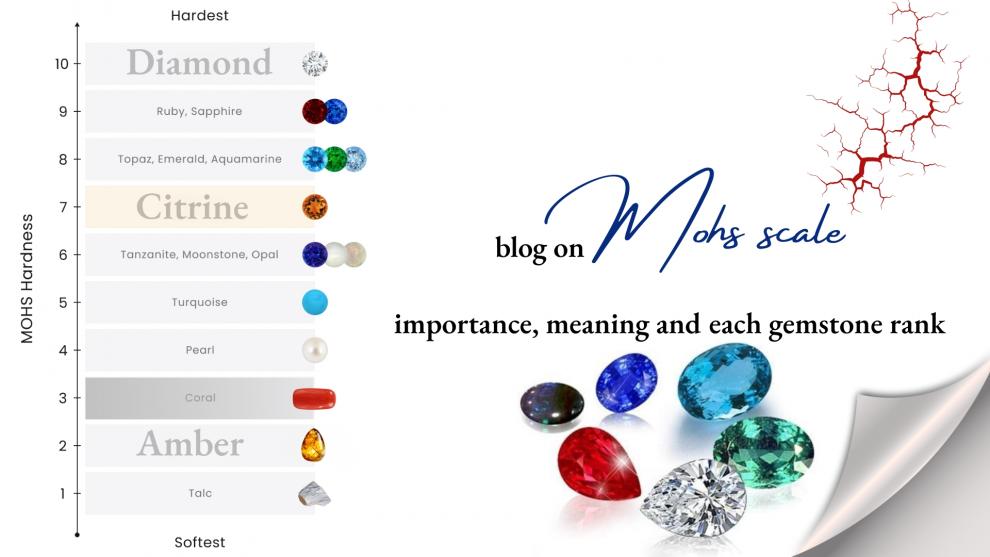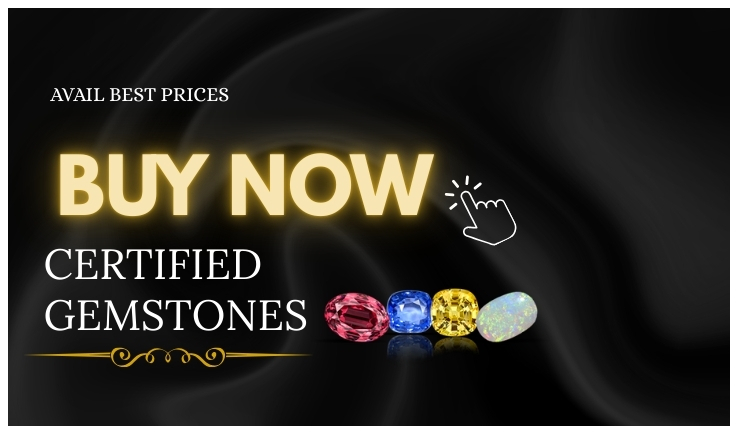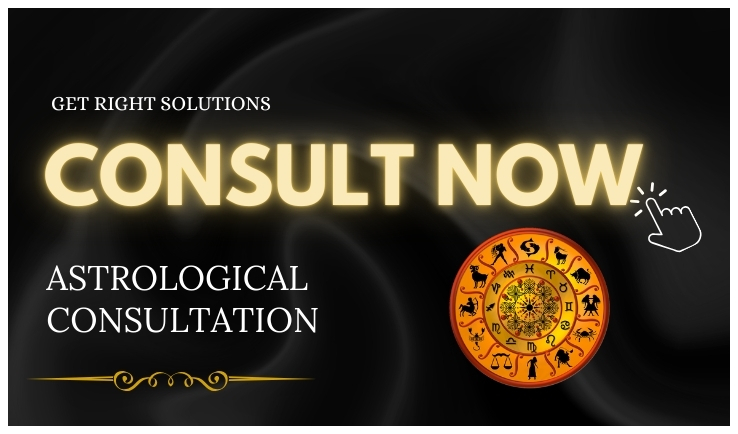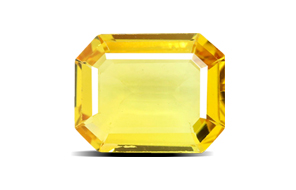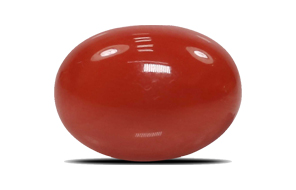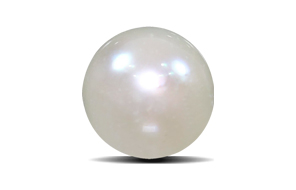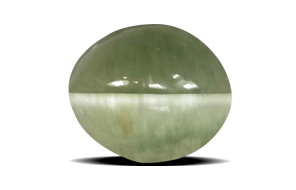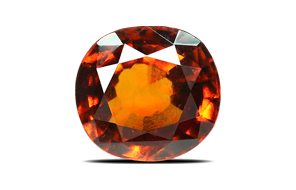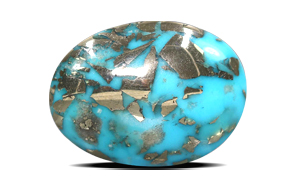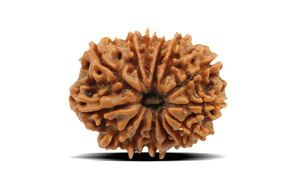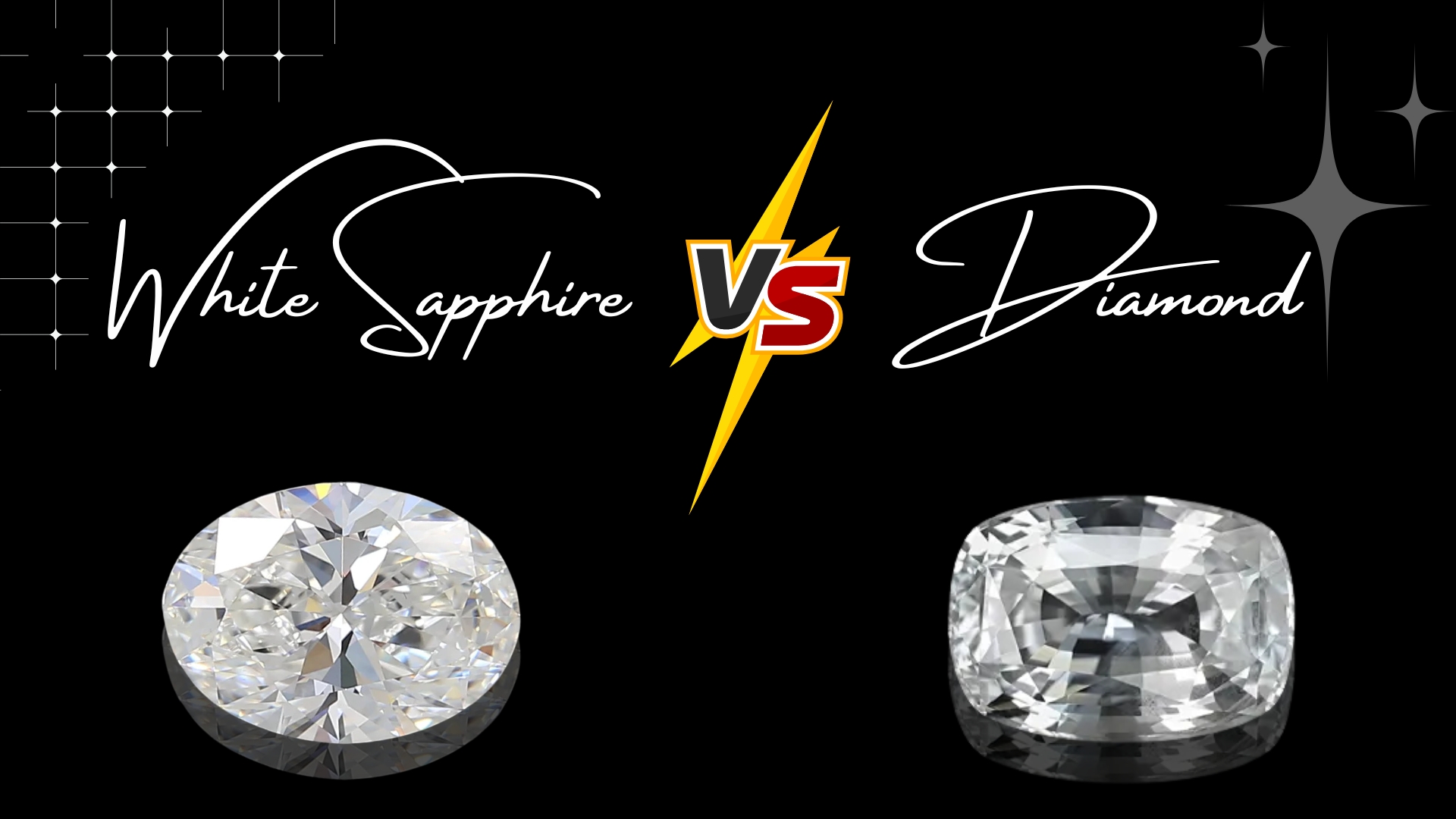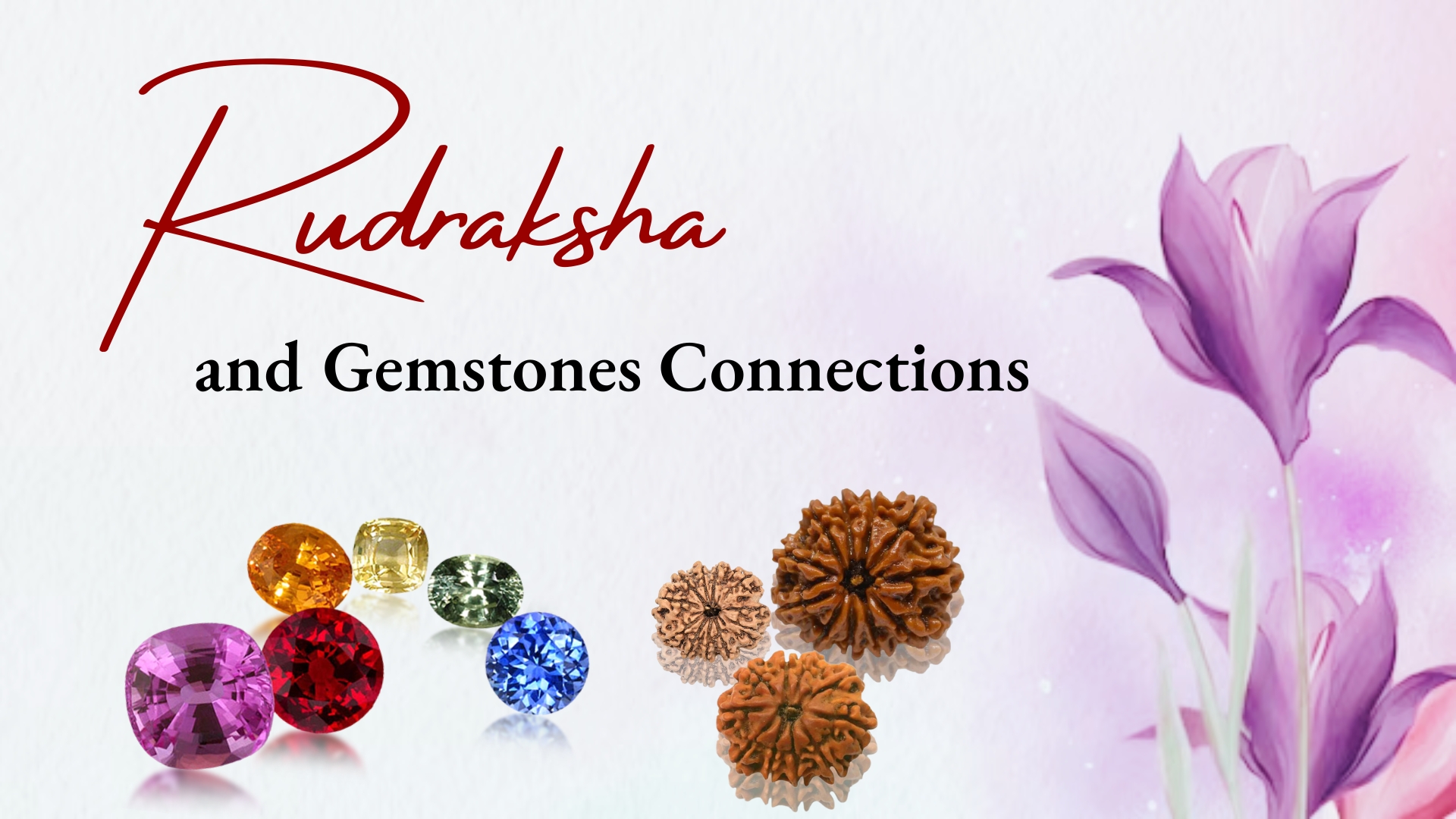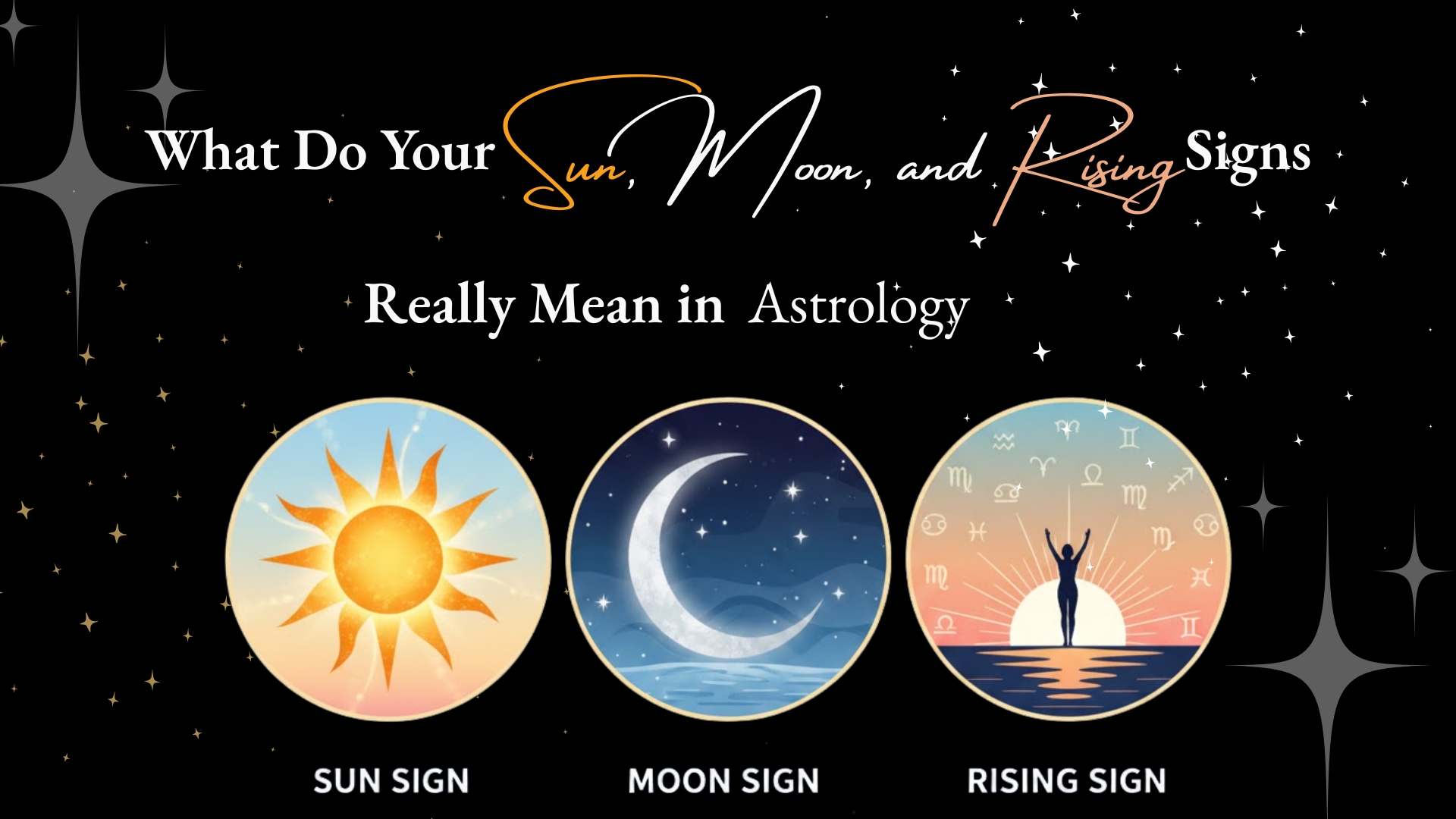Every gemstone is a tale of brilliance and strength. The world of gemstones isn’t only about appearance, but also its durability and endurance. Here, the Mohs Scale of Hardness enters, a fascinating system that tells us how tough and durable a gemstone truly is. Whether as s gemstone collector, jewellery lover, or someone who loves to explore the deep meaning of crystals. Understanding the cycle of the Mohs scale will help choose the ideal piece that matches lifestyle and energy.
What Is the Mohs Scale?
The Mohs scale of hardness was first introduced in 1812 by Friedrich Mohs, a German mineralogist. It ranks each gemstone on the scale of 1 to 10 based on the ability of appearance. If a crystal ranks 1, then it is the softest and 10 is the hardest.
For example:
If a sapphire can scratch quartz but is scratched by a diamond, its hardness lies between 7 and 10. In this case, sapphire ranks 9.This simple test is a revolutionised gemology. The actual meaning of the Mohs scale is beyond just scientific study. It plays a vital role in jewellery making, gemstone care, and gemstone identification.
Why Is the Mohs Scale Important in Gemology?
The gemstone hardness reflects a stone’s strength and also how it should be worn, cleaned, and set in jewellery.
Here’s why the Mohs scale's importance matters:
- Jewellery Durability:
The hard gemstones like diamond, sapphire, and ruby are perfect for daily wear rings. The lighter and softer gemstones, like emerald or pearl, need protective settings and special care. - Gemstone Maintenance:
The softer gemstones scratch more easily and lose polish over time. The Mohs hardness helps you handle and store them correctly so that they can last for a longer period. - Authenticity Check:
Gemologists use the hardness testing to differentiate between genuine gemstones and imitations. - Investment Value:
If a gemstone is durable, then it will last longer. This makes it a smarter and more timeless investment that will surely benefit in future.
Mohs Scale Chart: Ranking Gemstones from Softest to Hardest
Here, the classification of both precious and semiprecious gemstones is mentioned along with their rank on the Mohs scale of hardness.
1. Talc – Mohs Hardness 1
The softest mineral on the scale. Talc can be scratched easily with a fingernail and isn’t used in jewellery.
2. Gypsum – Mohs Hardness 2
Known for its transparent beauty but extreme softness. It is commonly used for carvings not only in jewellery.
3. Calcite and Malachite – Mohs Hardness 3
These stones are attractive but fragile. Malachite, with its green banded pattern, is popular for ornaments but unsuitable for daily jewellery wear.
4. Fluorite – Mohs Hardness 4
It represents a classic and breathtaking colour variety that makes it collectable. However, often this crystal gets broken or scratched easily under a small amount of pressure.
5. Apatite – Mohs Hardness 5
A gemstone showcases blue and green shades. Despite its beauty, it’s delicate — perfect for pendants, not rings.
6. Orthoclase Feldspar – Mohs Hardness 6
This group includes Moonstone and Labradorite — both mystical stones admired for their iridescent glow. They should be worn occasionally and stored separately from harder gems.
7. Quartz Family – Mohs Hardness 7
The Quartz family includes:
- Amethyst (Purple)
- Citrine (Golden Yellow)
- Rose Quartz (Pink)
- Smoky Quartz (Brownish Grey)
Quartz is relatively hard and perfect for everyday wear jewellery. It marks the boundary between soft and hard stones on the Mohs scale.
8. Topaz – Mohs Hardness 8
Topaz symbolises clarity and confidence. Available in colours like blue, pink, and yellow, it’s durable but can still cleave if struck sharply.
9. Corundum – Mohs Hardness 9
Corundum forms two of the world’s most valuable gemstones — Ruby and Sapphire.
- Ruby: The fiery red gem ruby symbolises passion, courage, and vitality. This gem ranks 9 on the hardness scale, and it is an excellent choice for rings. Due to its durability, it is also ideal as everyday jewellery.
- Sapphire: This beautiful crystal is found in many colours and represents wisdom and integrity, along with stunning beauty. Its toughness makes it a perfect engagement or a heirloom gemstone.
The ruby and sapphire rank second on the Mohs scale of hardness after the diamond.
10. Diamond – Mohs Hardness 10
The hardest natural substance on Earth. A diamond can scratch any other gemstone, but nothing can scratch it.
It symbolises eternity, clarity, and strength.
Though incredibly hard, diamonds can chip if struck due to their crystal structure, so care is still essential.
Where Do Other Precious Gemstones Stand on the Mohs Scale?
Let’s look at the Mohs scale ranking for each precious gemstone specifically:
|
Gemstone |
Mohs Hardness |
Durability Level |
Ideal Jewellery Use |
|
Diamond |
10 |
Extremely Durable |
All jewellery, especially rings |
|
Ruby |
9 |
Highly Durable |
Rings, pendants, bracelets |
|
Sapphire |
9 |
Highly Durable |
Daily wear, engagement rings |
|
Emerald |
7.5–8 |
Moderately Durable |
Earrings, necklaces |
|
Pearl |
2.5–4.5 |
Very Soft |
Occasional wear only |
Emeralds rank between 7.5 to 8, which contain natural inclusions also known as “jardin”. These jardins make the gemstone more brittle. They require extra care in comparison to rubies and sapphires.
Pearls are organic and natural crystals that rank as the softest materials and need the gentlest handling. It asks for no exposure to chemicals or rough surfaces, as it will damage the beauty of the gem.
How the Mohs Scale Helps in Gemstone Selection
Buying or wearing gemstones with an understanding of the Mohs hardness scale can save the gemstone from being damaged easily.
- For daily wear jewellery, choose gemstones above 7 on the Mohs scale, such as Quartz, Topaz, Sapphire, Ruby, or Diamond.
- For occasional or symbolic pieces, opt for softer gems like Moonstone, Opal, or Pearl, but handle them delicately.
- Always store gemstones separately; harder stones can easily scratch softer ones if kept together.
This is why gemstone durability is not just a technical detail; it’s the key to preserving their beauty for generations.
Understanding the Mohs Scale in Modern Jewellery Care
Today, jewellers still rely on the Mohs scale meaning to guide customers in choosing gems that match their lifestyle. A gemstone’s value isn’t just in its colour or cut — it’s in how well it can withstand life’s moments.If you love to wear jewellery every day, a Diamond, a Ruby, or a Sapphire will remain radiant and strong.
If you prefer unique and mystical gems, Moonstone, Labradorite, or Opal can express personality — just with gentler care. The Mohs scale's importance lies in helping us balance beauty with practicality, ensuring that every gemstone’s glow lasts a lifetime.
Conclusion: The Strength Behind Every Gemstone’s Shine
Each gemstone tells a tale of Earth’s creation, beauty, and endurance. The Mohs Scale of Hardness reminds us that brilliance is more than appearance — it’s resilience. From the eternal sparkle of a diamond to the soothing lustre of a pearl, every gem shines in its own strength.Understanding gemstone hardness helps us not only appreciate their natural charm but also care for them with respect. Because true beauty — like a gemstone — is not just seen, it’s preserved.
About The Author
Ms Shelly Singh, with over four years of professional writing experience, has contributed impactful content to leading newspaper publications. She has authored 50+ press releases and contributed to three anthologies.
Her career spans journalism, digital marketing, the education industry, and the gemstone and jewellery industry, where she has been shaping brand narratives for the past year. Skilled in content writing, content strategy, social media marketing, and influencer collaborations, she brings depth, creativity, and strategic insight to every project she undertakes.

